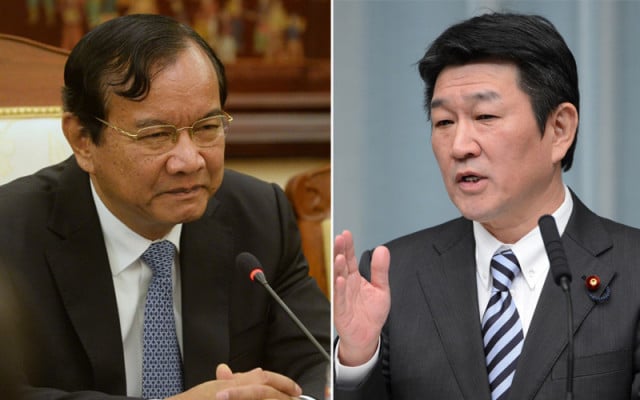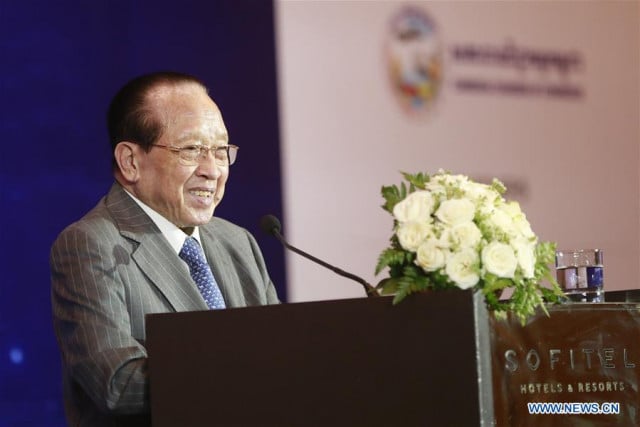“The First Royal Apsara” – Princess Norodom Buppha Devi’s Lifelong Passion for Khmer Classical Dance
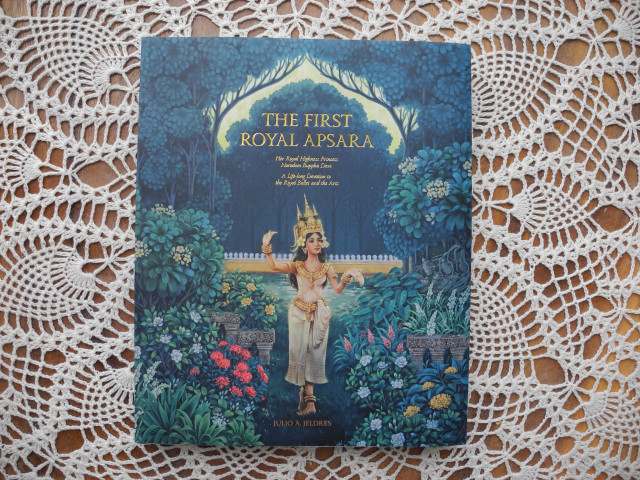
- By Michelle Vachon
- July 9, 2022 8:30 AM
PHNOM PENH—In 1991, as they were on the plane that was bringing King Norodom Sihanouk home following the signing of the Paris Peace Agreements, Princess Norodom Buppha Devi asked Julio Jeldres to write a book on the Royal Ballet.
She hoped that the dancers and traditional musicians who had survived the Khmer Rouge regime and wars of the 1970s and 1980s could be gathered so that this centuries-old artform could be taught and performed again.
“She had spent some time in the refugee camps in Thailand in 1985 and 1986, teaching dance,” Jeldres said in an interview on July 6. “She had found some survivors there but not many.”
The Paris Peace Agreements signed in October 1991 in France had put an end to war. When Princess Buppha Devi arrived in Phnom Penh shortly afterwards, the Cambodian authorities asked her to perform the famous Apsara dance she had first staged in 1964, which she did.
This was the last time she ever performed. Throughout the following decades, she would focus on ensuring that Khmer classical dance, which was already staged 1,000 years or so at Angkor, would remain a vibrant artform in the country.
The book she had asked Jeldres to write on the Royal Ballet would not come out during the princess’ lifetime. After serving as special assistant to King Sihanouk in the 1980s, Jeldres had become his official biographer with the rank of ambassador in the early 1990s, which involved writing books on the king and the royal family, and later on handling the late king’s archives.
So, it is only in recent years that Jeldres was able to do so. However, the focus of the book became Princess Bopha Devi who passed away in November 2019 and whose life had been linked to the Royal Ballet since childhood, along with a chapter on the history of the Royal Ballet, especially in the 19th and 20th centuries.
The book “The First Royal Apsara” was launched on July 7 in Phnom Penh during a press conference given by Prince Sisowath Veakchiravuddh, president of the Princess Buppha Devi Association and the late princess’ youngest child, and Prince Sisowath Tesso who was the princess’ assistant and is now director of the Princess Buppha Devi Dance School.
Richly illustrated, the large-format book puts an emphasis on the princess’ lifelong connection with Khmer classical dance and her efforts to not only preserve this dance form but also to make it thrive. One of the first pages of the book contains a quote from her dated Nov. 7, 2003: “[t]he Royal Ballet belongs to all Cambodians and my most important role is to ensure the preservation of classical dance for future generations.”
Entitled “The First Royal Apsara,” Jeldres tells the story of Princess Buppha Devi—daughter of King Norodom Sihanouk and Khmer classical dancer Neak Moneang Phat Kanhol—in a simple, nearly intimate way that makes her come to life as a person in addition to making the book an easy tale to read.
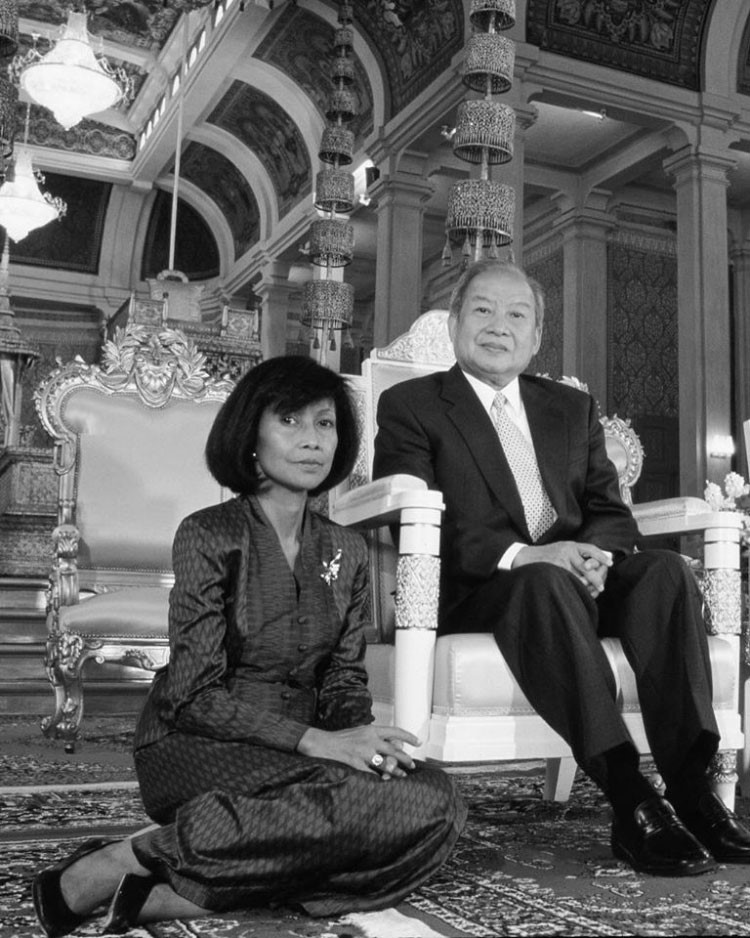
King Norodom Sihanouk and Princess Norodom Buppha Devi are photographed in the throne hall of the Royal Palace in their later years. Photo: provided
The life of the princess became linked to dancing from a very young age, at first during school holidays and, during high school, in-between classes as she lived near the Royal Ballet dancers. So, like other Khmer classical dancers, she learned to dance many roles and the 400 or so gestures that dancers must master.
Then came the legendary Apsara dance that Princess Buppha Devi performed during the visit of French President Charles de Gaulle in 1964. “Contrary to popular belief, the Apsara dance did not originate from the time of King Jayavarman’s Angkor empire and is not a classical iconic dance handed down over the centuries,” writes Jeldres.
As he explains in the book, legendary French film director Marcel Camus in 1961 had Princess Buppha Devi wear a headdress and costume reminiscent of those of dancers seen on monuments at Angkor for a scene of his film “L’oiseau de paradis” (the bird of paradise).
This later inspired Queen Sisowath Kossamak, the princess’ grandmother, to choreograph a dance that she would perform in such a costume.
By the time Princess Buppha Devi danced for the French president, Khmer classical dance had become part of Cambodia’s diplomacy. “Aged only 5 years old, Princess Buppha Devi was tasked by her father to dance for the first time for a foreign personality during the visit of King Sisavan Vong of Laos to Cambodia in 1949,” Jeldres writes.
Accompanying Prince Sihanouk—no longer king since entering politics—she would perform in China several times in the 1950s and 1960s, in the United States in 1958, Egypt and Yugoslavia in 1959, and so on, he writes.
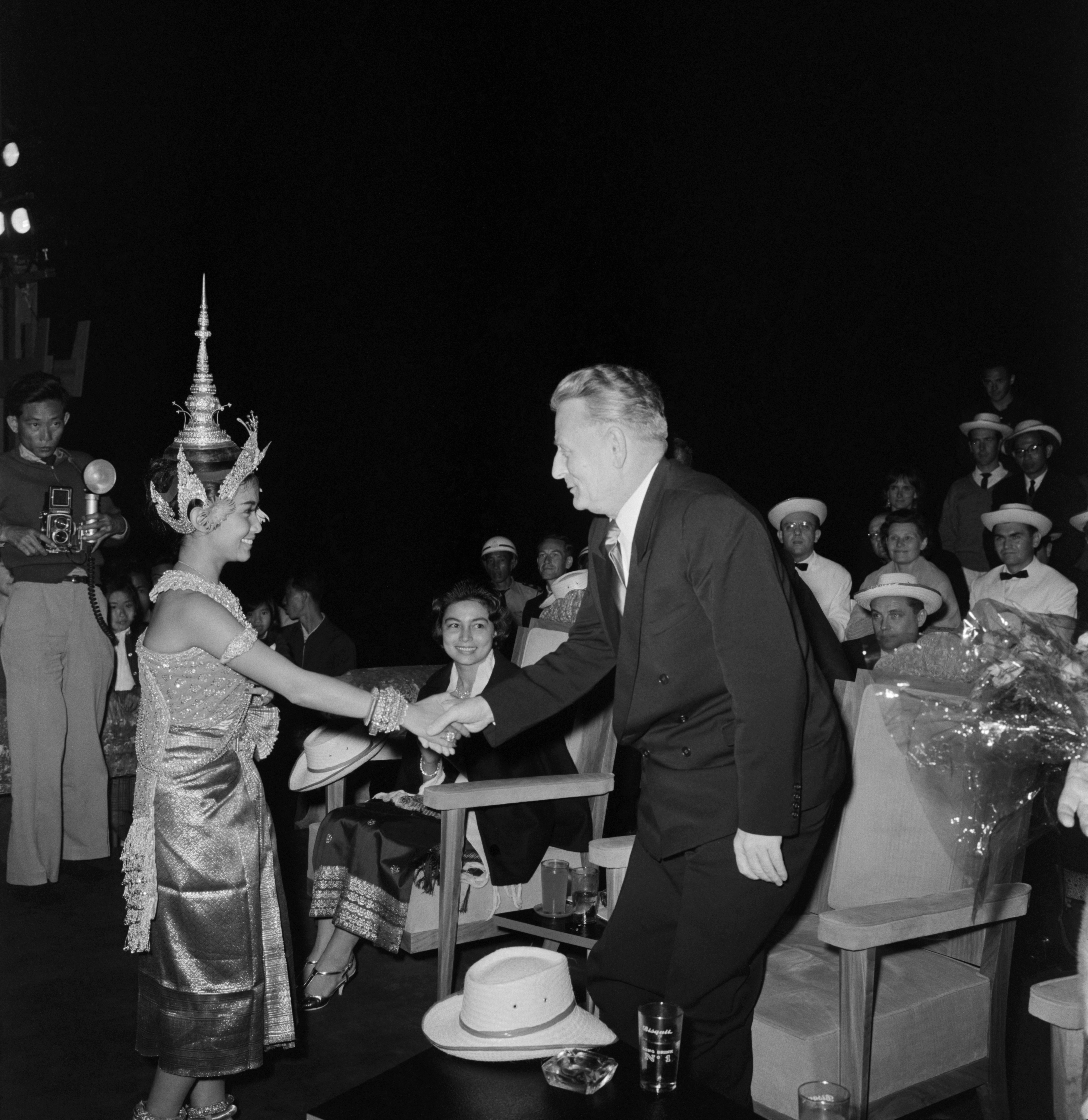 Princess Buppha Devi shakes hands with Czech President Antonin Novotny after a performance of the Royal Ballet in Prague in 1964. Photo: Courtesy of the Czech Embassy in Phnom Penh
Princess Buppha Devi shakes hands with Czech President Antonin Novotny after a performance of the Royal Ballet in Prague in 1964. Photo: Courtesy of the Czech Embassy in Phnom Penh
Soon came the years of war and turmoil of the 1970s and 1980s. In 1984, Princess Buppha Devi would spend time at the Site-B refugee camp in Thailand teaching dance to young Cambodian refugees.
In the 1990s, the princess first served as cultural advisor and from 1998 to 2004 as minister at the Ministry of Culture and Fine Arts. In 1998, she negotiated with Thailand the return of antiquities that had been smuggled out of Cambodia, which led the Thai authorities to return 122 artifacts in 2000, Jeldres writes.
In November 2003, the Royal Ballet of Cambodia was proclaimed Masterpiece of the Oral and Intangible Heritage of Humanity by UNESCO. “The Proclamation was a milestone in the long history of the Royal Ballet,” he writes. “It was also an homage to the quality of all the dancers and an acknowledgement of their devotion and the sacrifices they made.”
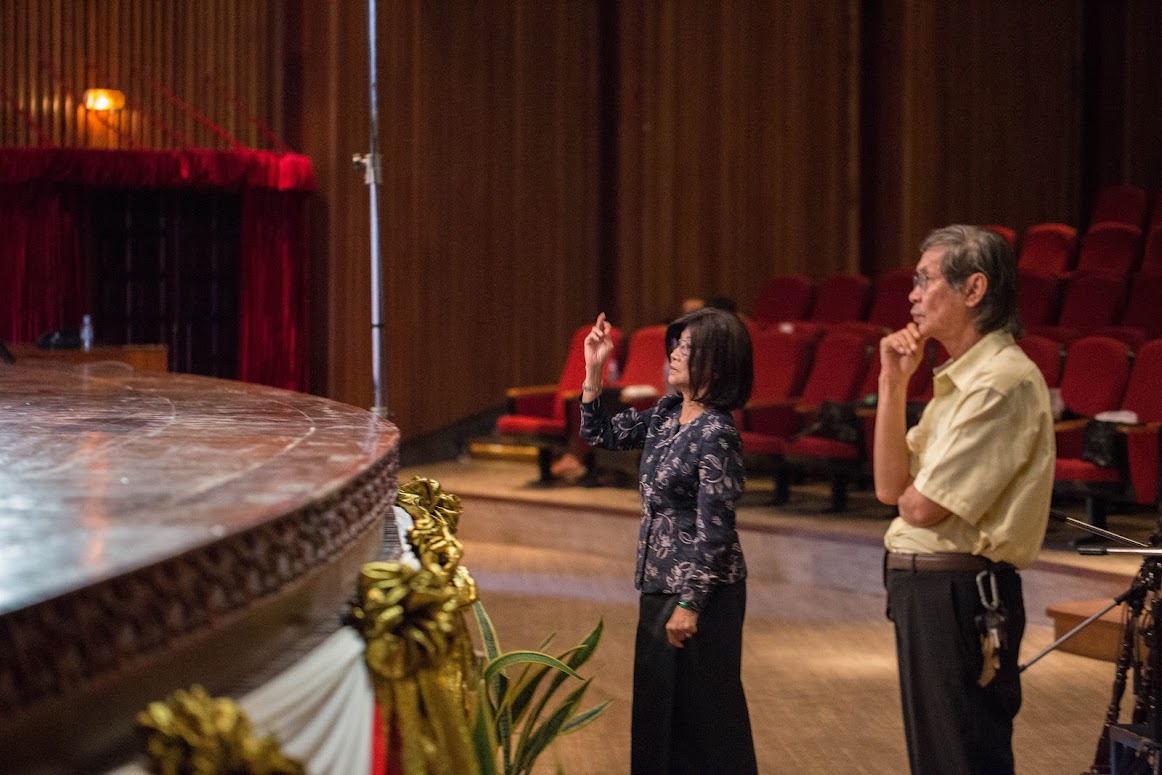 Princess Buppha Devi, assisted by Proeung Chhieng of the Royal University of Fine Arts, directs a rehearsal of the Royal Ballet at the Chaktomuk theatre in 2017. Photo: Makara Ouch
Princess Buppha Devi, assisted by Proeung Chhieng of the Royal University of Fine Arts, directs a rehearsal of the Royal Ballet at the Chaktomuk theatre in 2017. Photo: Makara Ouch
As part of her biography, Jeldres mentions Princess Buppha Devi’s four marriages and children. The first one in 1959 was to Prince Norodom Norinractevong. She was reluctant to marry him, Jeldres said in interview. “Queen Kossamak told her that, as a princess, sometimes you have to follow duty and not the heart. And that’s what she did. She followed duty. But the marriage did not last very long.” The princess would marry several times afterward.
The book’s last chapter entitled “The Last Sampeah” speaks of Princess Buppha Devi’s passing in November 2019.
This book took Jeldres three years to complete as he could find little information on her. “There were a lot of articles about the Royal Ballet: that, no problem,” he said. “But about the person behind the Royal Ballet, not much.”
As Prince Sisowath Tesso explained in interview on July 7, “Princess Buppha Devi was a discrete person; she did not like talking about herself.” What was important to her, he said, “was to preserve…the country’s heritage.” She had hoped to see UNESCO recognize Cambodian silk and other art and artisan forms so their value could be recognized internationally as well as within the county, he said. “What always motivated her…was that Cambodians be truly aware of [the importance] of their culture here in Cambodia as well as abroad. Which is why we would often tour internationally [with the Royal Ballet].”
Her wish to make Cambodians appreciate their culture has led to the Norodom Buppha Devi Association supporting a free Khmer classical dance school in Banteay Srei in Siem Reap Province and in Phnom Penh—https://www.facebook.com/Princess-Buppha-Devi-Dance-School-104565384926946/
“My mother wanted Khmer dance not to be solely the Royal Ballet,” said Prince Sisowath Veakchiravuddh, president of the Princess Buppha Devi Association and the princess’ youngest son. “She wanted to make this available to all, whether people have money or not…In Banteay Srei [district] in Siem Reap Province, the school is for the villages’ young people who don’t have access to proper education.
“What we are trying to accomplish is to sponsor events and make Cambodian culture better known,” Prince Veakchiravuddh said.
The book “The First Royal Apsara” is currently available in Phnom Penh at the White Mansion Boutique Hotel and will be available at Monument Books in mid-July.

Julio Jeldres signs a copy of the book he wrote on the life of Princess Buppha Devi during the book launch on July 7, 2022.






